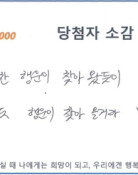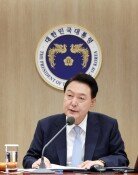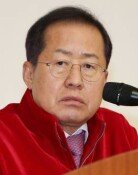Mt. Seorak cable cars run by President Park`s family
Mt. Seorak cable cars run by President Park`s family
Posted August. 15, 2015 07:10,
Local residents in the scenic Mt. Seorak area and environmental activists are engaged in heated debates over a proposed project to install cable cars at the mountain. Residents in Yangyang County, Gangwon Province delivered 20,000 people`s signatures advocating the cable cars, saying the project is their long dream. On the same day, environmental activist groups, including the Green Korea United, held a rally in front of the Gangwon Provincial Government building to protest the plan.
The project involves building a 3.5-kilometer cableway connecting a spot near a hotel in Seo-myeon, Yangyang County to Kkeutcheong near the Daecheongbong Peak. Gangwon Province and Yangyang County filed for the central government`s approval of the cableway project, only to be rejected due to concerns over environmental damage. However, the project gained momentum after President Park Geun-hye ordered the administration to ease regulations to promote tourism in mountain areas. The Ministry of Environment plans to make a final decision on the proposal this month.
The controversies over the cable cars have put the existing Gwongeumseong Cable Cars on the mountain. The operator of the latter is Han Tae-hyun, a nephew of the president. Han`s family has maintained monopoly over the cable cars since the late President Park Chung-hee granted a business license to Han, his son-in-law, just a year before Mt. Seorak was designated as a national park where development would be restricted. Although the company earns 5 billion won (4.3 million dollars) to 7 billion won (6 million dollars) a year, it has never donated any money for environmental protection. About 8.3 billion won (7 million dollars) in annual funds for the mountain`s environment comes entirely from taxpayers` money.
The Skyrail Rainforest Cableway in Cairns, Australia was designed in an environmentally-friendly way and has received a European Greening of Business Tourism Award. This case shows that establishing cable cars is not an issue that should be approached in a dichotomous way of choosing between development and environmental protection. A decision has to be made on a case-by-case basis by taking both economy and environment into consideration. There are about 20 cable car operators in Korea, but most of them are losing money, giving financial burdens on local autonomous governments. However, the government should not give favors only to a particular business, as it did with Gwongeumseong Cable Cars. If the government has no choice but to grant a license to an existing cable car operator, it should make it contribute to environmental protection.
ysshin@donga.com
Headline News
- Israel prepares for retaliation against Iran
- Samsung reclaims top spot, surpassing Apple in smartphone market
- 77% of Koreans in 20s and 30s are 'Kangaroo Tribe' due to job crisis
- KBO referees embroiled in controversy over ABS decision concealment
- Inflation, oil price surge put double shock on global economy







